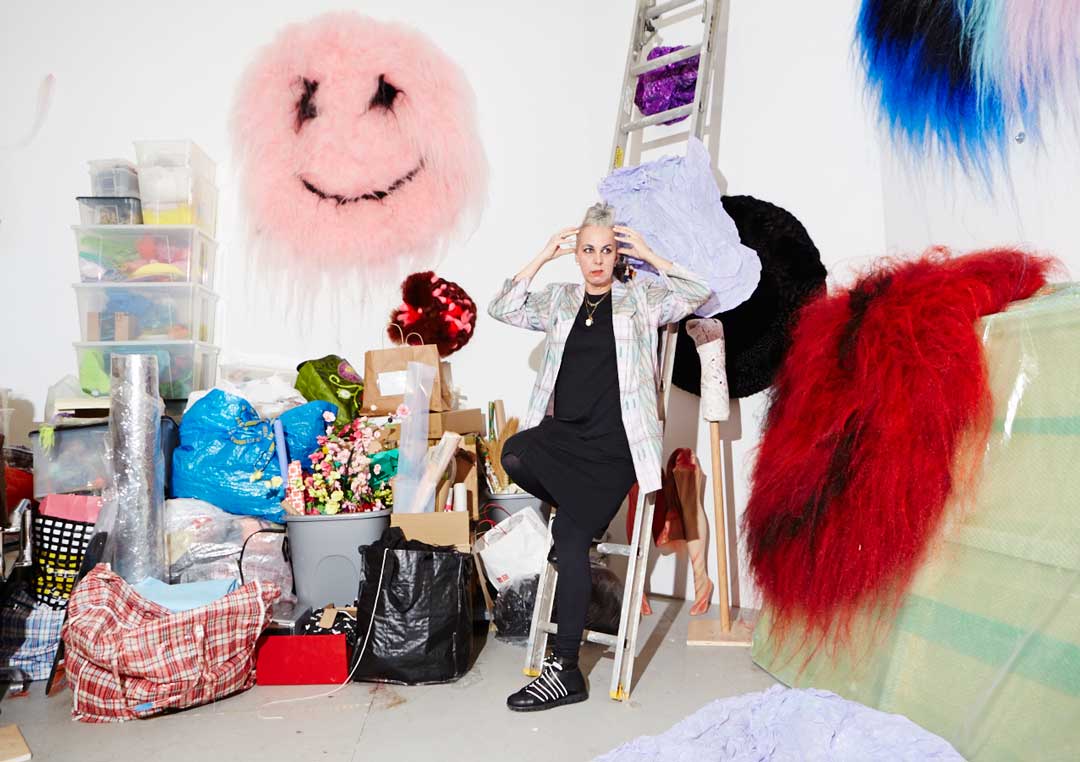
Talking Textiles with Shoplifter
Vitamin T artist Hrafnhildur Arnardóttir's installation in the Icelandic pavilion is the hit of the Venice Biennale
The Icelandic artist Hrafnhildur Arnardóttir adopted the name ‘Shoplifter’ after a stranger misheard her first name. And while Shoplifter says she’s ‘not a thief at heart’, the accidental misnomer shines light on several facets of her artistic practice, such as consumer culture, the relationship between fashion and identity, and the fetishism of everyday objects. These interests manifest through the repeated usage of one primary material throughout her work: hair, real and synthetic. Across her practice, Shoplifter manipulates hair in ways both familiar – like braiding and knotting – and unfamiliar, like separating it into multi-coloured tufts and grafting it to the wall to resemble overgrowths of fungus or moss.
Hair fascinates her in part because of its association with vanity: she sees hair as a fundamental signifier for identity and its performance. In a positive sense, vanity can be a creative force of self-expression, but taken too far it can be destructive, as suggested in one of her wall pieces titled ‘Vanity Disorder IV’ (2012). The work is made of yellow, brown and maroon hair extensions hung in a jagged, erratic pattern – an aggressive abstract composition, suggesting self-absorption gone wrong. In art history, vanity has been traditionally associated with mortality: the fleeting versus the eternal. In this context, hair is a ‘vanitas’ symbol for death, growth and decay.
In Shoplifter’s dramatic work ‘Sleeping Beauty’ (2012), a fuzzy mass of synthetic yellow hair extends from an artificial human skull, resembling both the remnants of a complex hairstyle and cobwebs on a corpse.---Hairstyles are also indicative of fashion and its changing trends, and since she was a child Shoplifter has been fascinated with clothes, which she often makes by hand. Previously she worked as a stylist and also designed theatre costumes, and the exquisitely handcrafted nature of her artwork is a testament to these skills.
Here, the Vitamin T: Threads and Textiles in Contemporary Art featured artist tells tactility, textiles and her work for the current Venice Biennale.
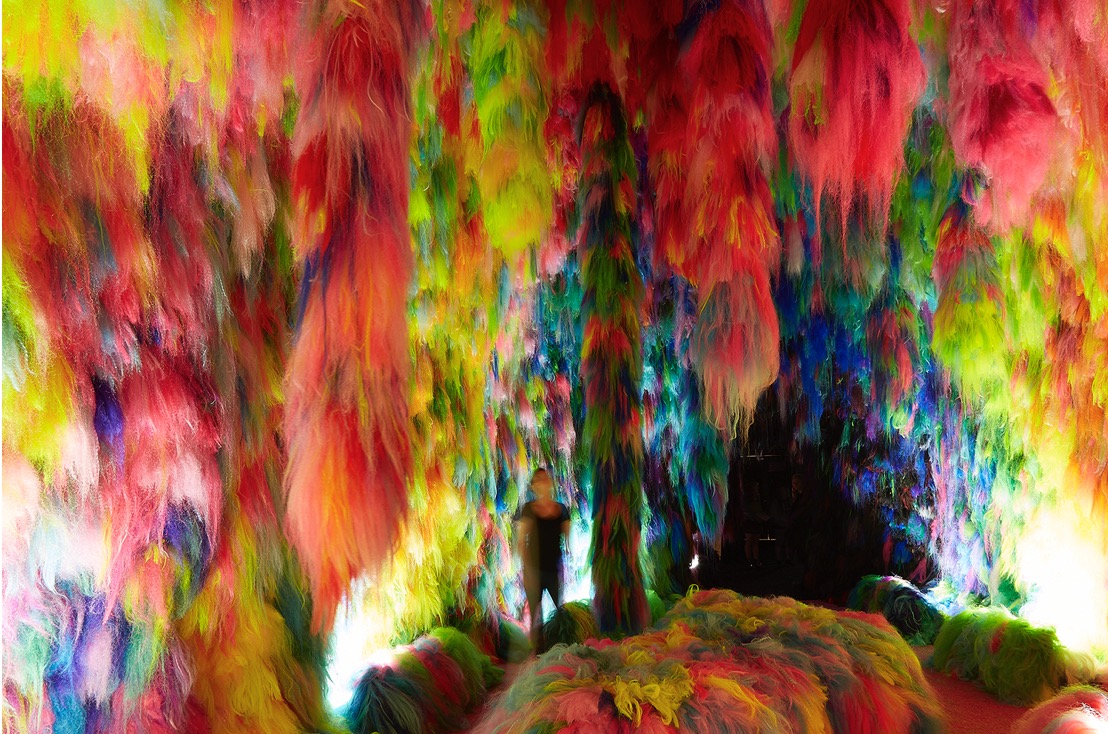
Who are you and what’s your relationship with threads and textile art? I'm a fibre fanatic with a difficult name, Hrafnhildur Arnardóttir, and I got the name Shoplifter by mistake over 20 years ago. Growing up in Iceland in the 70s I was exposed to a lot of bold textiles and Nordic tapestry traditions that shifted into the pop culture of the 80s with brilliant colours and hilarious fabric design that inevitably formed the visual language of this breakdancing teenager.
What part does the tactility of the material play in your desire to work with it? A strand of hair, a thread of yarn is but a line on a paper to me but it is three dimensional and therefore malleable and more stimulating as I can manipulate it in space. My creativity is intensely triggered by texture and surface, shapes and colours. Tactility is everything to me, I have an acute desire to manipulate and transform found objects and fibres to create artwork, contemplating various stages of beauty, questioning aesthetic traditions within art and obsessively absorb the nature of every day materials and respond to my urge to find a way to see them anew.
I studied painting and found myself continuously trying to escape the flatness of it, by painting on found objects. Using colour or not in your work is inescapably adressing painting. In my case I’ve been using human and synthetic hair extensions in any colours I find, both subdued and natural colours as well as neon and brightly coloured ones to create three-dimensional paintings that surround the viewer.
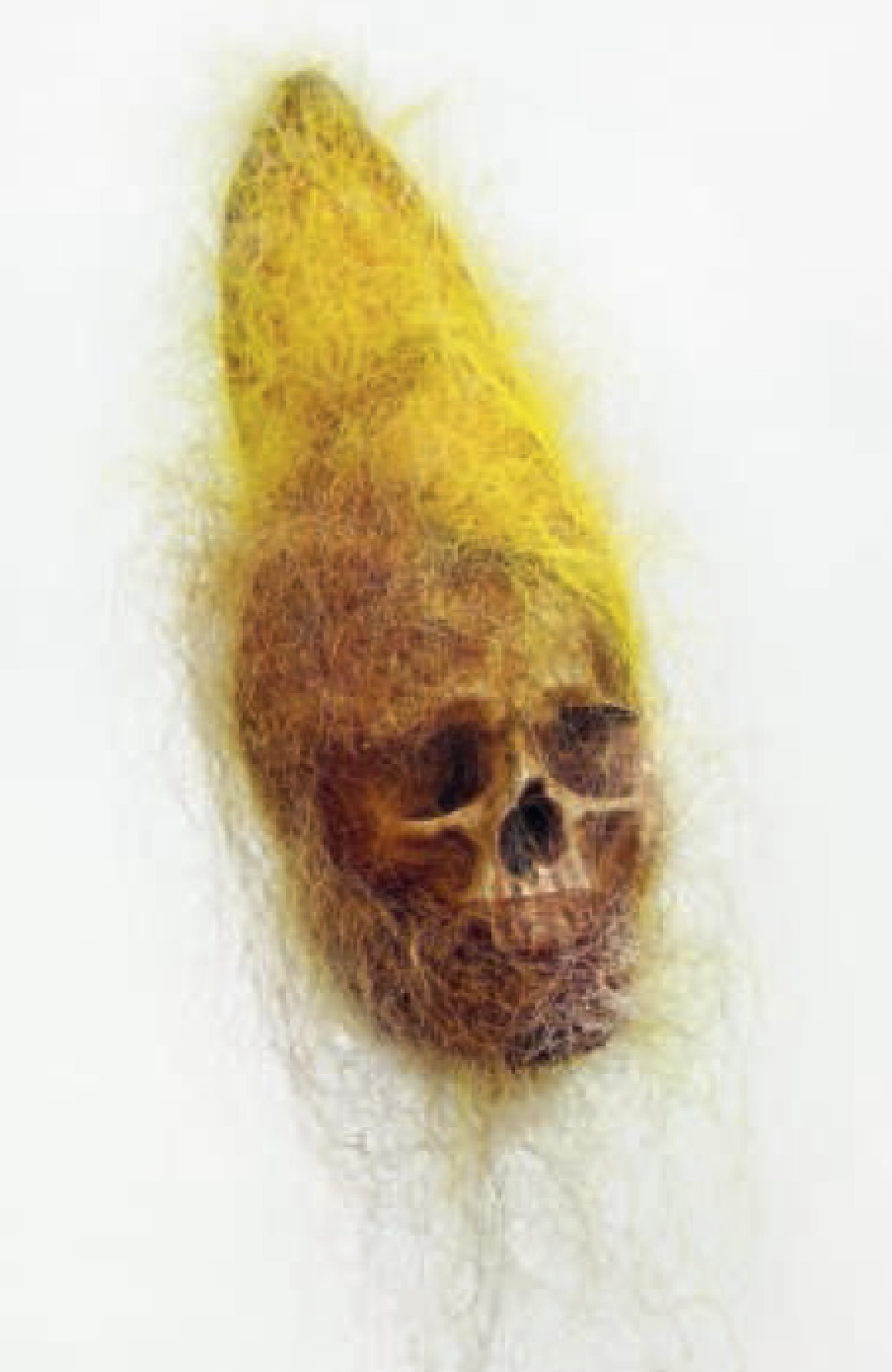
Why do you think there’s an increased interest in textile art right now? There is something factual and physical when it comes to textiles, we wear woven garments against our skin and tactile objects and fabric design surround us everyday and therefore people can easily relate to art made of fibres and fabric. It activates and affects us in its analogue form alongside our rich online reality where we travel through the untouchable mental fabrication of the digital realm. Textile art has been living in the shadow of other artforms as something of less artistic value, this has everything to do with patriarchy since textiles were mostly made by women and put on a lower pedestal as something just crafty and ‘doodly’ women were doing as a housewife’s hobby.
It is incredulous and sad to look back at history and realise how a large body of magnificent textile artwork by women artists has been overlooked or categorised as something less noble than creative expression of male artists. Today we are experiencing a different attitude towards this art medium as notable in the increased number of men using textiles in their work. But more than that, there is simply a continuous urge to revisit and discover art of the past, and that seems to be the trend with textiles now, and that allows for more interest in modern fibre artwork.
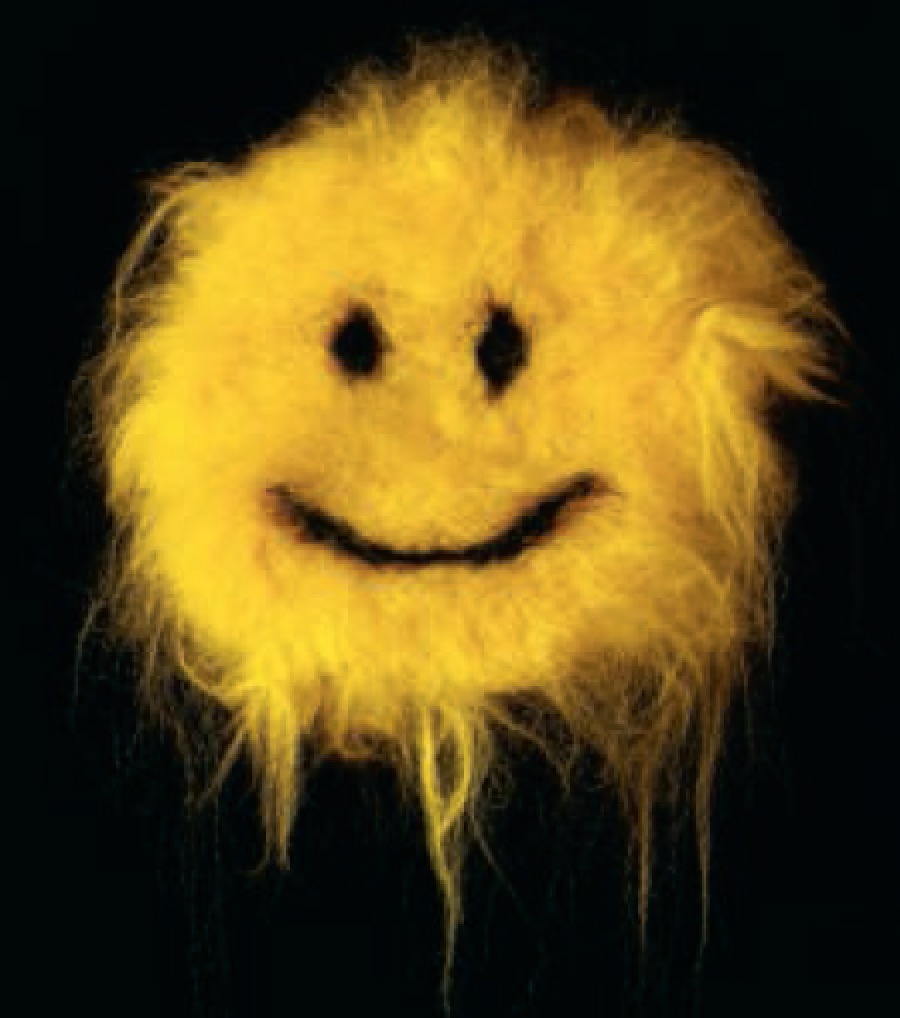
Everyone uses textiles in their daily life, does that help or hinder their standing as a fine art material? ‘Fine art’ sounds so pompous to me, it´s meant to differentiate "low art' from ‘high art’, a bit arrogant to me! It suggests wanting to elevate certain types of ‘art’ as something better than other kinds of creative expression around us, and this ‘fine art’ should exist apart from all others in the prestigious elite realm called the ‘art world’.
I make only one distinction, there is art made without any limitations and then there is other artistic expression whose ultimate goal is to be practical and has to take into account in its design that humans have two legs and two arms, or that of a vessel that has to be able to contain liquid or a structure that can be sat on. It relates to everyday practical usefulness as objects, but the line has a blurry element to it as I find art to be intensely mentally useful as well. Art versus design simply has different reasons for being made: either its main goal is to live in a realm of mental communication with a less defined subject matter or as in design, has to adhere to certain limitations of physics.
Neither better nor worse than other artistic endeavours, just a different conversation and limitations, good design is nobler than bad art and vice versa. I'm inspired by human behaviour, fashion, pop culture and mass production when I make art but I don´t necessarily have to make my art using a lot of people wearing mass-produced clothing to do so.
How I would like to define the my own art is that it doesn’t have to adhere to any rule, rhyme or reason, it is limitless, I choose to work as that kind of an artist.
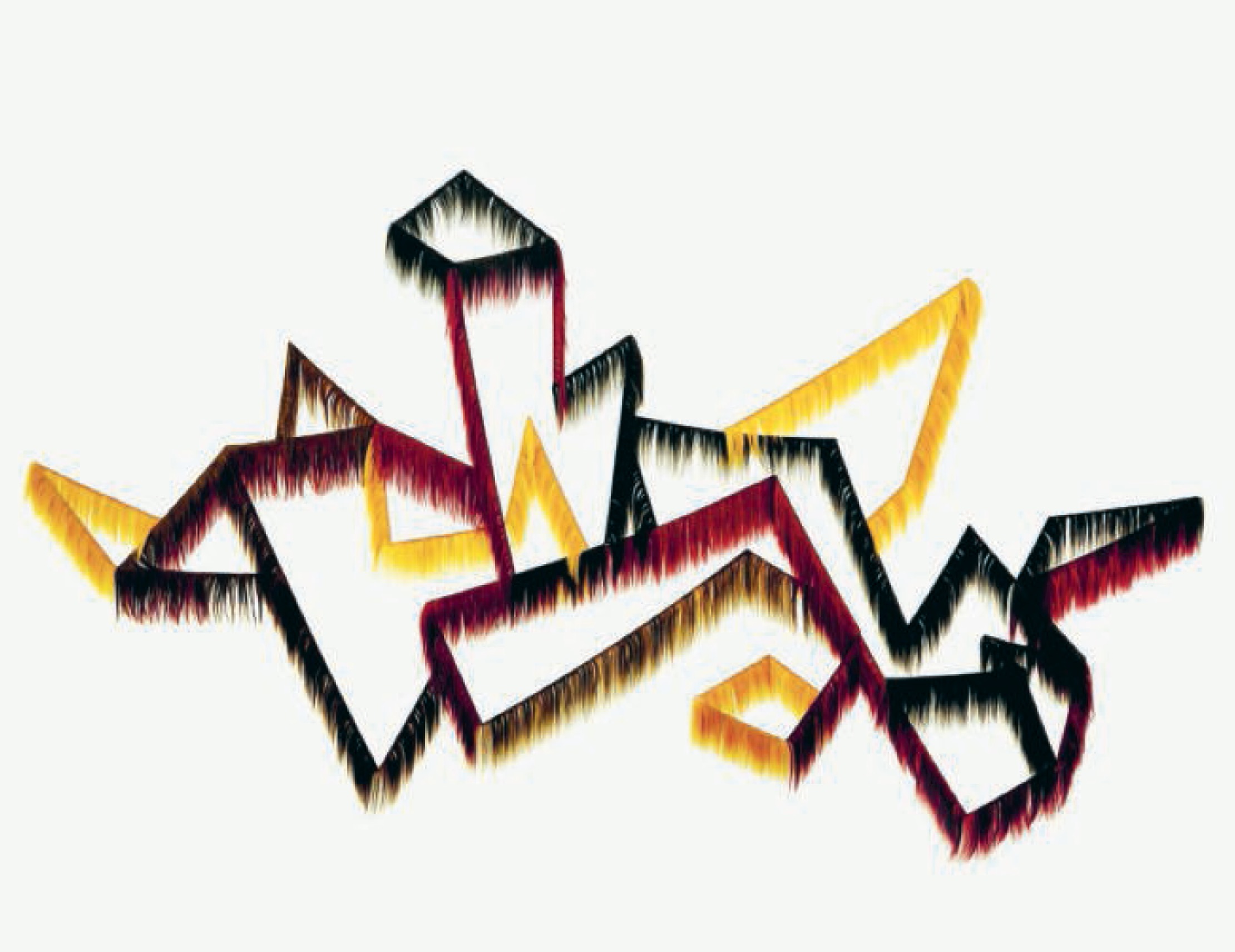
Whose textile art do you admire? I admire the incredible creativity of Victorian memory flowers that date back to the 16th century, where women would create wreaths of flowers out of human hair, most often in memory of a loved one who had passed away. Our hair, a bodily fibre, can continue to exist long after we die and it's simultanously romantic and morbid - contradictions I am fascinated by.
What are the particular challenges and rewards of working in this medium? Part of working with hair is that it needs taming and manipulation to be something other than just a tangle or a mess, although untangled mess in itself can also be an artistic statement. Most fibre art is about organising or placing threads in a particular way in order to communicate something of value to the maker. I am incredibly mentally stimulated and find it very therapeutic to work with fibre. It has a calming meditative effect on me and I feel like I am trying to collaborate with a material that can be similar to harnessing a wild being.
What is specific about the long term care of textile work for a collector? Any material used in an artwork has its own concerns; marble and bronze have their own issues to consider for conservation as does wood or paper, some are more fragile than others. I get a lot of questions on how to keep my hairy artwork dust free and clean, you can enshrine it behind glass, but then you add a layer of meaning to it that deals with preciousness, being enclosed it can lose the direct physicality to the texture, but the visual stimuli is similar though. I’ve used a lot of synthetic fibres, manmade and plastic, and it looks like my work will outlast us all.
What’s next for you, and what’s next for threads and textile art? As I'm writing this, I'm creating a large scale installation for the Icelandic Pavilion at the la Biennale di Venezia 2019. My work is an ode to nature, be it natural or man made, plants or pop culture. By replicating it using colourful synthetic fibres it becomes its own hyper-nature, an analogue comment on the surreal nature of the digital realm.
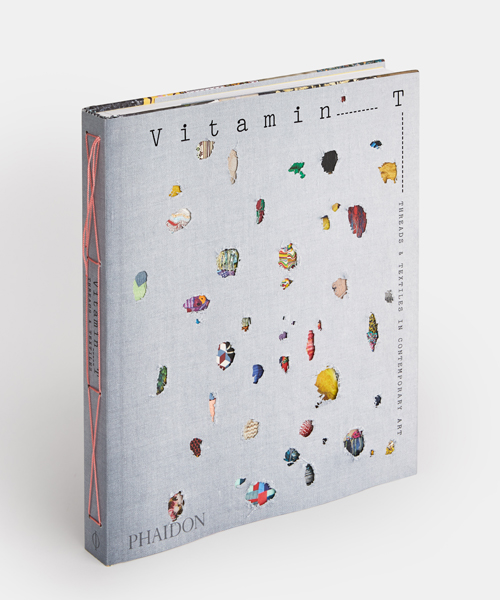
Vitamin T is a global survey of more than 100 artists, chosen by art-world professionals for their work with threads, stitching, and textiles
Celebrating tapestry, embroidery, stitching and textiles as used by visual artists worldwide, Vitamin T: Threads and Textiles in Contemporary Art is the latest in the celebrated series in which leading curators, critics, and art professionals nominate living artists for inclusion. Vitamin T is a vibrant and incredibly timely survey – the first of its kind.